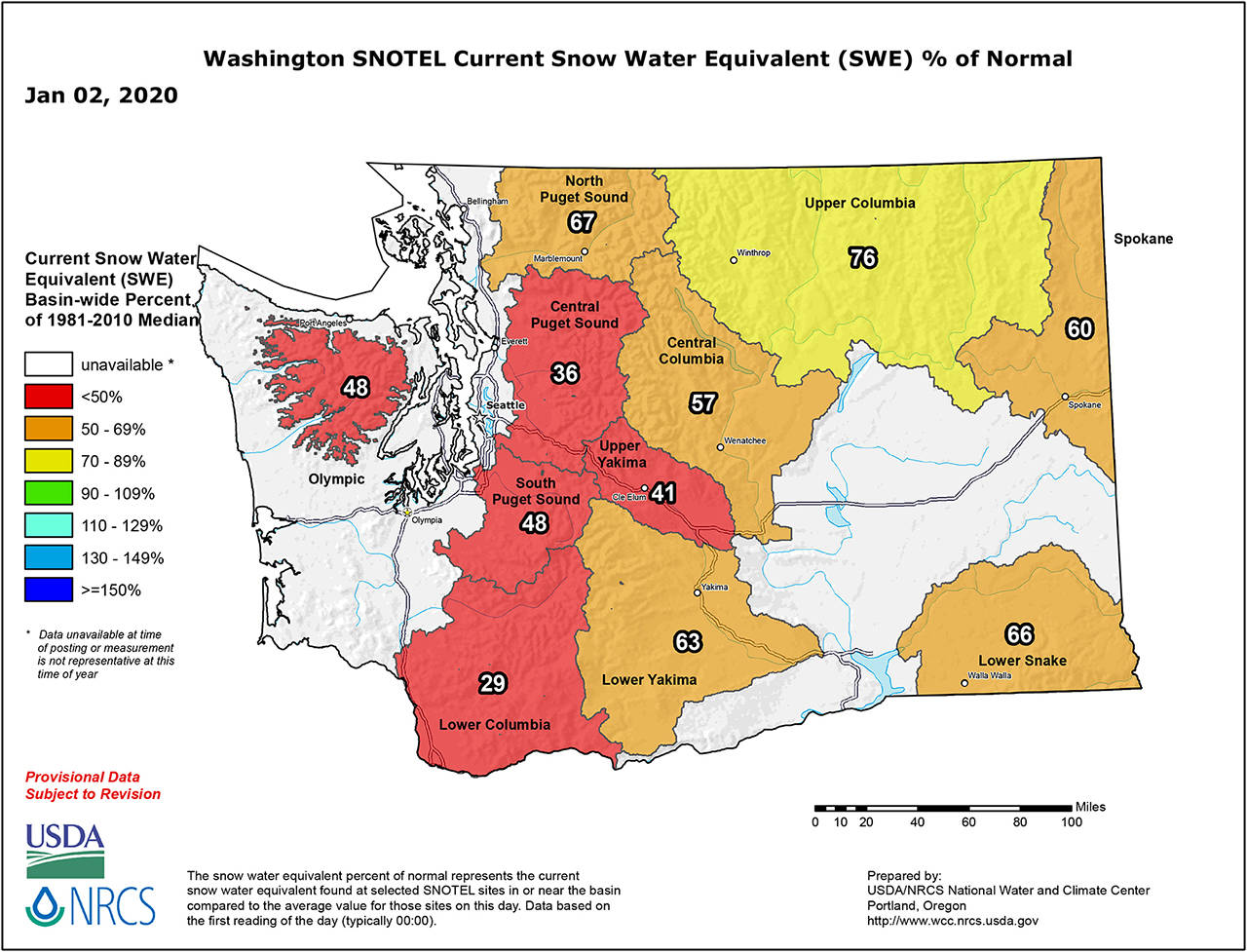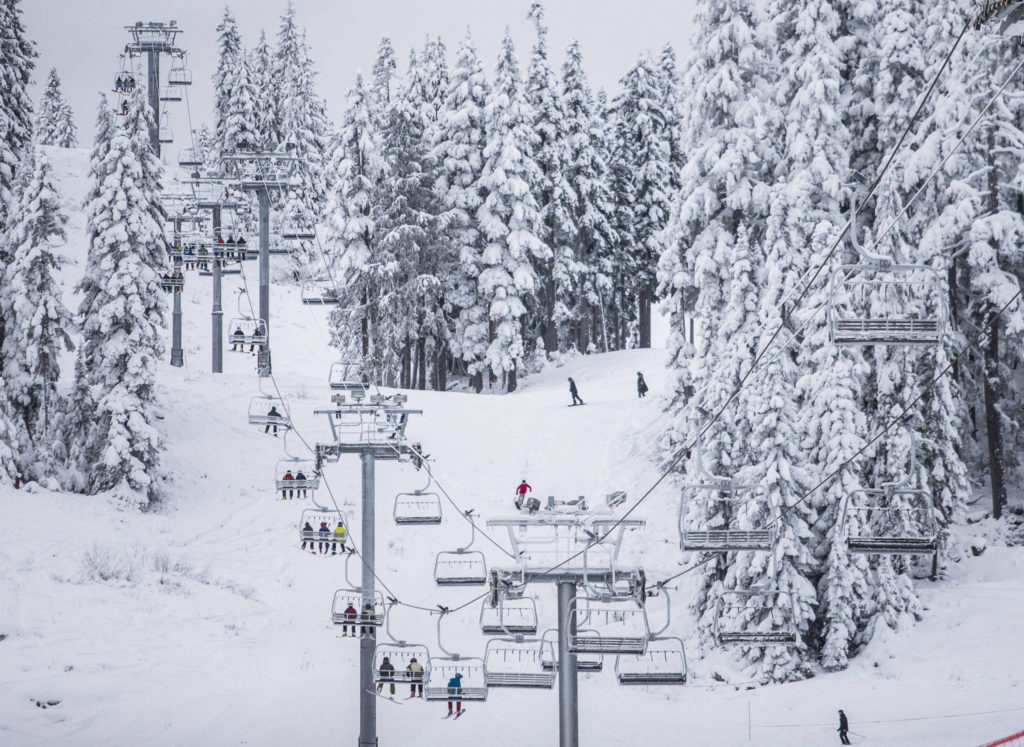SULTAN — Snowpack that feeds local watersheds is at just 36% of normal, but local officials say it’s too soon to cry “drought.”
It’s snowfall later in the season, around March, that really counts.
Even if the snowpack was at typical levels, Everett city engineer Jim Miller said it could still melt by April, when it would begin feeding most of Snohomish County’s water supply.
“Snowpack accumulates and peaks about the first of April,” he said.
Before Washington’s last big drought in 2015, Miller said, the same measurements in April showed a snowpack at zero.
The Sultan River Basin, part of which feeds Snohomish County’s Spada Lake reservoir, does not have its own snowpack monitor. Its levels are estimated by monitors to the north, east and west, and it’s considered part of the broader central Puget Sound water system. Spada Lake is at its average level for this time of year, Miller said.
At this time last year, the central Puget Sound water system was at 46% of normal. From there the snowpack improved in Snohomish County, while other parts of the state were less fortunate and declared a drought.
Across the state this year, snowpack is 47% of normal, according to the Associated Press. It was about the same, 46%, at this time five years ago. Statewide, some scientists say this year is worryingly similar to 2015.
“It’s very reminiscent of 2015, but this year we are way behind on mountain precipitation,” said Scott Pattee, state water supply specialist for the Natural Resources Conservation Service in Mount Vernon. “It’s worrisome. It’s the third slowest start in snow accumulation statewide since the 1990s and we had one of the driest Novembers on record.”
The biggest concern is that the five mountain reservoirs supplying water to the Yakima River Basin are significantly behind in recharging, and 130% to 135% of normal snowfall is now needed in the Upper Yakima to get it back to normal by April 1, he said.
Elsewhere, normal snowfall from here on out would mean 70% to 80% of normal snowpack by April 1, he said.
A majority of the Cascades are 25% to 50% of normal snow water equivalent, said Douglas Call, U.S. Bureau of Reclamation Yakima River operator. That measurement estimates how much water is contained in the snowpack, factoring in both the depth and density.
The U.S. Climate Prediction Center says the odds are good for temperatures slightly above normal through March. The outlook for precipitation is better than normal west of the Cascade crest and normal to the east.
The Associated Press contributed to this story.
Julia-Grace Sanders: 425-339-3439; jgsanders@heraldnet.com.
Talk to us
> Give us your news tips.
> Send us a letter to the editor.
> More Herald contact information.


























